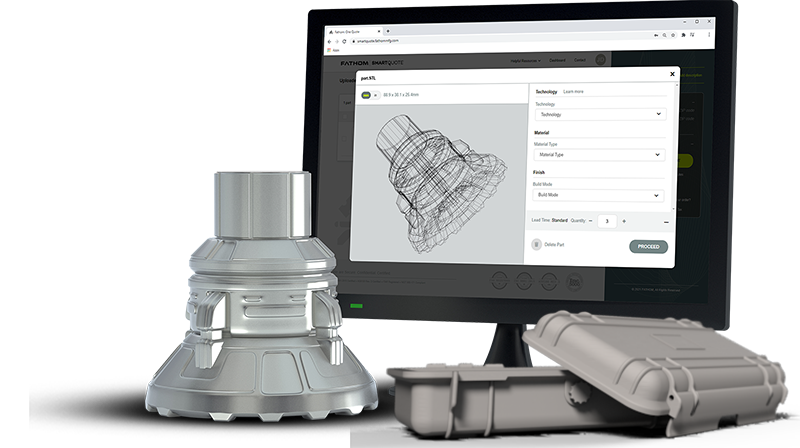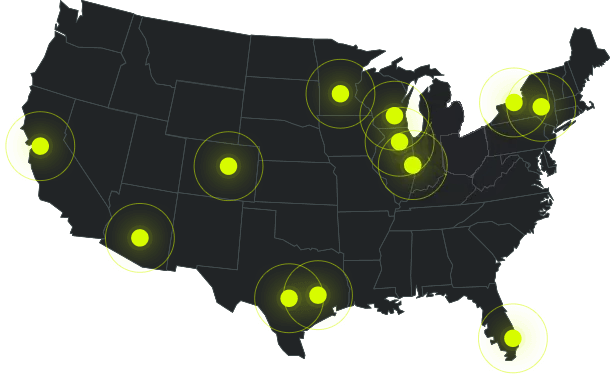Manufacturing is a numbers game – produce the most parts possible at the lowest cost. Injection molding has traditionally held the advantage when it comes to producing high volumes of complex and durable parts. In recent years, new technology has pushed 3D printing to the forefront, challenging injection molding as a viable alternative for production runs.
3D Printing, also known as additive manufacturing, is no longer just for prototyping. Advances in material science and machine capability have opened the doors to new design possibilities, faster turn around, and far less cost.
3D Printing vs. Traditional Manufacturing Comparison
The break-even point of 3D printing and injection molding has become much closer making costs relatively even for comparable production runs. New technologies have taken additive manufacturing from being used only for prototyping into a viable alternative for low- to mid-volume production.
Projects requiring tens of thousands up to millions of parts will still be made with traditional manufacturing but can benefit greatly from additive manufacturing in the early stages of development. The additive technologies most commonly used for production of plastic parts include Fused Deposition Modeling (FDM), Selective Laser Sintering (SLS) and Multi Jet Fusion (MJF). Direct Metal Laser Sintering (DMLS) is an additive technology used to print metal parts. These processes are ideal for prototyping and in some cases low volume production but can easily produce hundreds or thousands of parts.
The Selective Thermoplastic Electrophotographic Process (STEP) puts additive manufacturing on nearly equal footing with injection molding in both cost and material selection. STEP is capable of printing plastic parts with the same materials used for injection molding. STEP is also capable of printing parts with different materials and different colors simultaneously. The STEP machine prints layers of ‘voxels’ or 3D pixels. Each voxel is 22-microns thick. Voxels of different colors and materials can be laid down at the same time. The design possibilities are nearly endless. Products can be customized in real time to match branding or customer preference. Previously, producing products made of two different materials was done with an injection molding process called overmolding. It is a complicated process that requires costly tooling, and a lengthy turnaround. STEP can print parts with two different materials in one pass. This also leads to built-in cost cutting measures where possible, simply by printing with a cheaper material on the inside of the product while using the desired, more expensive material on the outside.
Additive Manufacturing Benefits
Consider the many benefits that go beyond simple part-price comparisons when comparing 3D printing vs. injection molding.
#1 // Choose from a Wide Range of Production-Grade Materials
Material development continues to be a high priority within the additive manufacturing community. See the chart below for an example material comparison.
#2 // Reduce Project Costs and Time-to-Market
Soft launching or beta testing can now be used as a guide to the design process with little impact on per-part cost. Additive manufacturing can help you avoid the expense of reworking, or even worse, completely scrapping an expensive mold.
Lead times for additive manufacturing can be measured in hours or days instead of weeks or months. 3D printing with production-grade materials will let you enter the market while tooling is still underway or while production ramps up.
#3 // Enable Greater Design Flexibility and Break Free from Traditional Manufacturing Constraints
Modifications, improvements, and customization to parts can be implemented at any time simply by editing the Computer Aided Design (CAD) file. Parts-on-demand is now a reality. Digital tooling is always available and accessible worldwide. Parts can be made anywhere there is a compatible machine. Customizing parts by changing colors or design features can be done in the middle of a production run.
Additive manufacturing represents true freedom of design. Parts are built from the ground up, layer-by-layer. This allows designers the opportunity to introduce complex geometries that would be impossible to complete with conventional machining. Traditional methods are limited by the reach and capability of the cutting tools. Drastic undercuts, internal structures, and thin-to-thick walls are all possible with 3D printing.
Direct Part Replacement with Additive Manufacturing
Additive technologies will continue to grow as a significant force in the manufacturing process as designers and engineers embrace the advantages and more materials become readily available. 3D printing can now be deployed over entire production runs, enhancing multiple stages of the product development process, from prototype to end-use parts. Direct Digital Manufacturing (DDM) is the use of additive manufacturing to fabricate the final product and/or parts used during production and assembly of finished goods. DDM allows companies to exit the traditional manufacturing paradigm and realize the true freedom of additive technologies. DDM can be used to create parts-on-demand, make instantaneous design changes, and provide digital tooling to manufacturing centers around the world.
Additive manufacturing also enables the practice of Direct Part Replacement. Parts originally made with traditional manufacturing methods can now be printed anytime and anywhere. Direct part replacement will shorten lead times and lower costs. It is common to opt for direct part replacement when only a few thousand parts are required or as a bridge-to-production solution while injection molding tooling is still underway or before production can be brought online.
Featured Part Example — Injection Molding vs. 3D Printing











